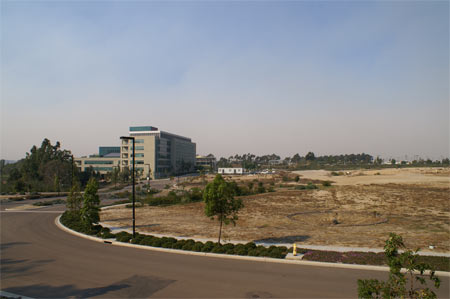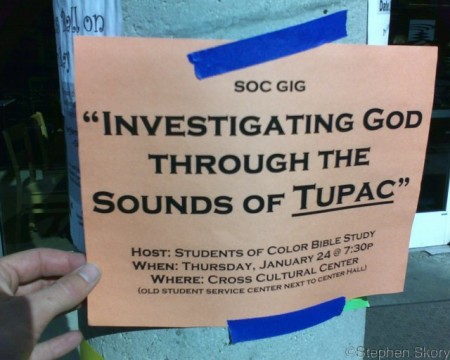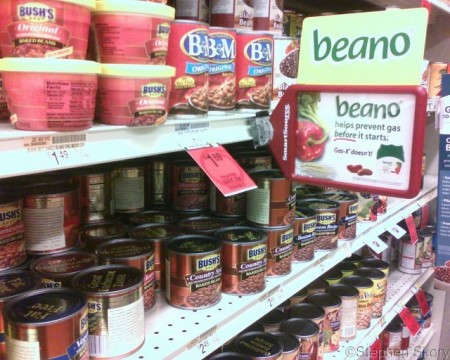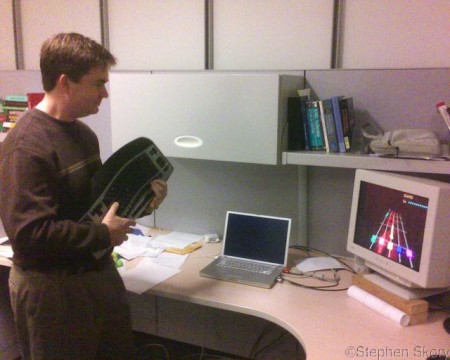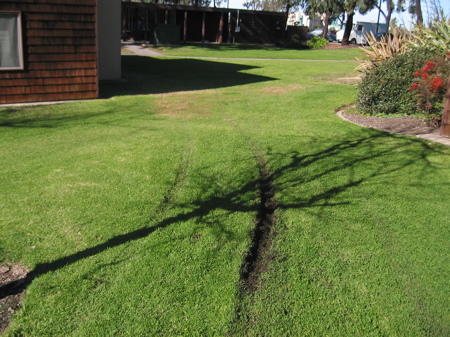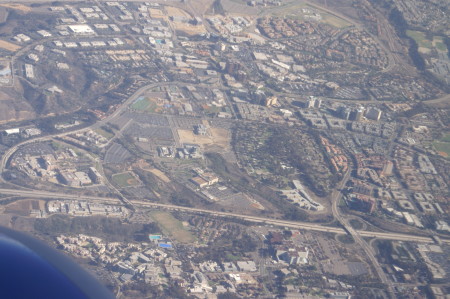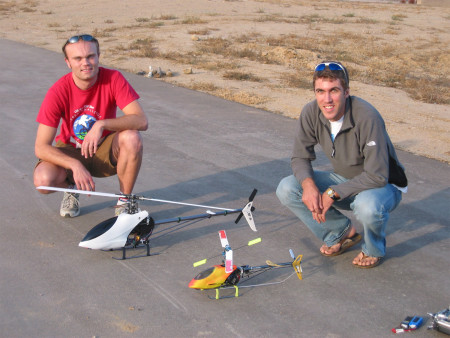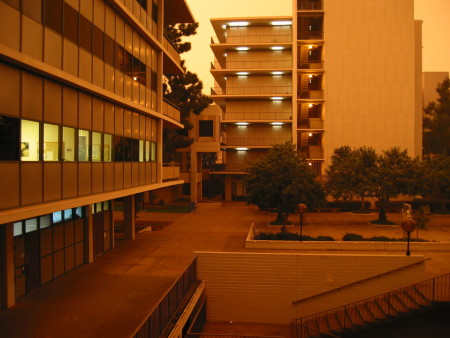Monte-Carlo Whoopass
Don't worry about the physical meaning of the two plots below:
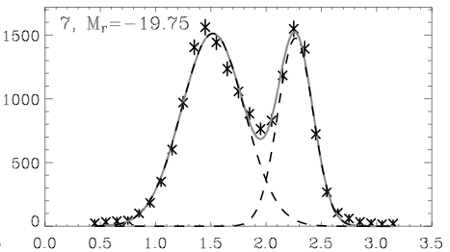
Taken from Baldry et. al. (2004),figure 3 (plot 7).
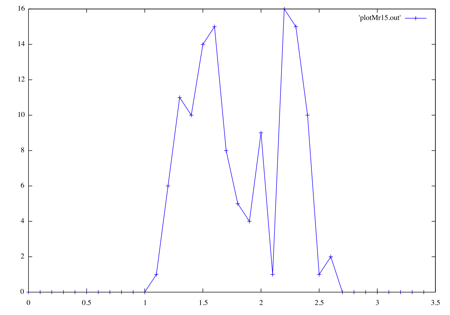
My plot of entirely fake data that means almost nothing.
Just notice that the two peaks are pretty much in the same places on both graphs, 1.5 and 2.2. The first graph shows physical data (stars) and a double-Gaussian fit (light solid line). The second graph is the result of my using Monte-Carlo fitting to make entirely fake data using the first curve. The real graph has over 10,000 items to make that smooth distribution, while with only about 100 items Monte-Carlo is already starting to look like the real thing. Of course, it will take much more items to capture the smoothness and the "long-tail" on each end.
I just wanted to share because the whole thing I wrote, which includes a simple function integration (for normalization), worked on my first try.
more ...Yahoo! Mail Tries, and Misses
I have written thrice (1, 2, 3) in the past about the new Yahoo! mail interface, the Ajaxed interface to Yahoo! mail. It is incredible how slowly they make improvements to it. It's not like Yahoo! cares what I say, but of the points I raised over two years ago in my first post, they still haven't all been fixed.
But Yahoo! maybe trying harder. There is now a preference to add the greater-than signs on replied to messages:

Which is great. Until you try to use it. Here is a message I sent myself:

Here is what I get when I hit "reply" (this is a screen shot of the compose window, the text is editable):
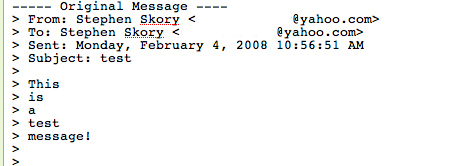
Yes, each and every word of the message I'm replying to gets its own line. But it gets worse! Here's what I get when I send the replied message without touching anything:
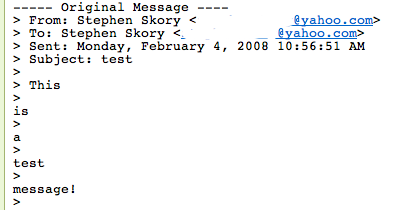
Here each word of the replied to message gets its own line separate from the greater-than signs. I hope this is just a simple bug (I will submit a bug report about this) but this is simply ridiculous.
more ...Busted Elevator

There is nothing moving in this image - the doors are stuck half open and the elevator mis-aligned with the floor. This is why I try to use the elevators in my building at school as little as possible. People get stuck inside with regularity.
more ...Caught on Cell
Above are three photos I've just uploaded off my cell phone. The first is a flier I saw on campus today. Somehow I never connected Tupac Shakur (the artist behind such cultural highlights as Strictly 4 My N.I.G.G.A.Z.) with God. The second illustrates choice supermarket product advertisement. The third shows my lab-mate Rick playing Frets on Fire, an open-source Guitar Hero. He wasn't half bad!
more ...2008 Presidential Primary

Today is my presidential primary, even though for most Californians it's on February fifth. I am a permanent absentee voter so I got my ballot in the mail yesterday. Besides the convenience of voting at home, I advocate absentee voting because it guarantees a paper record of your vote. All the paperless voting systems out there cannot be trusted. I'm not worried about fraud and conspiracies, I'm just familiar with how fragile most computer systems are. Without a paper record that the voter visually verifies before locking in their vote, I will never use a computer voting system.
Another benefit: now I get to ignore any and all advertisements that will be flooding the airwaves in the next four weeks.
more ...Crazy Italian Men
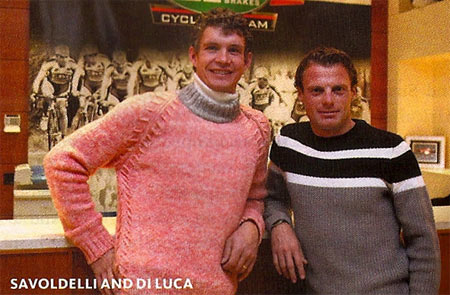
From the January 1 2008 Velonews, p. 70
When I was in Europe, I could always pick Italian men out of a crowd. They were the men willing to wear fashion even women aren't brave (stupid?) enough to wear. Before huge wrap around sunglasses became popular for everyone, I saw Italian men wearing them. Somehow I don't think Paolo Savoldelli's hideous pink thing will take the world by storm. Is he wearing two turtle necks below it? Or is the inside gray? Maybe he's wearing it in honor of his two pink jerseys from his Giro wins, but couldn't he have found something a little less ghastly?
more ...Amusing Spam
This is actually quite a clever spam in that they're not quoting a ridiculous amount of money. But in other respects they've make mistakes. I like how "IWP" seems to stand for some kind of action, like Input With Prejudice, but who can really know? It's also nine days until the end of year. It's very kind of the IRS to already have calculated my entire 2007 tax burden already, all my exemptions, and capital gains/losses, before the end of the year. I especially appreciate the Christmas greeting (see the full size).
more ...North Mesa Apartments Lawn
Everyone likes a nice grass lawn. They're soft, aesthetically neutral, and you can recreate on them better than plain dirt or asphalt. They require lots of maintenance and water, but there are definitely situations when they're a wonderful thing, like in a large public park. You can play touch football on it, or croquet, or play with your dogs. You can also have a picnic on a lawn under a shade tree.
They are not a wonderful thing in the apartment complex where I live. San Diego is in the desert, even though we are next to the ocean. Nearly all of our water is imported from the Colorado river or points north. Water resources are finite and San Diego cannot continue to grow without heeding this fact. I find the lawn where I live to be completely ridiculous, and the photo above shows many aspects of why I find it so excessive.
- It has been raining almost once a week for the last few weeks, but not enough to make the kind of mud seen here. Furthermore, I see mud like this all year, including the summer when it never rains. These lawns are either over-watered, poorly drained, or on really bad soil.
- Just beyond the muddy track you can see some dead brown spots. There are spots like this everywhere. Too muddy here, dead just over there. Something is wrong.
- There are concrete paths between all the buildings. The maintenance workers drive around in little carts, usually on the paths. Even so, they feel their time is precious enough to cut off the paths and ruin the lawn like this. Why even have a lawn here when it's going to get ruined?
- In the corner of the photo you can see some entirely reasonable shrubberies that cover the minority of the ground in the complex. They require much less water and care then the lawn. I see them being tended only a few times per year, perhaps as often as once a month.
- Once a week I see a horde of men (I guess 4) on lawn mowers tear nosily past my apartment. Another day a week someone comes by with an edger, grinding the cutter between the path and the lawn. The next day the leaf-blower comes to blow away leaves and grass cuttings. By adding these up, my guess is that the lawn costs about six days wages per week. That's a more than a whole employee, and I get to pay for this.
- Because so many of the lawns are either muddy, or brown, I rarely see people recreating on them. It also has to do with the fact we're all graduate students and have other things to do (like write complaints like this). Since this isn't a city park, technically the surrounding community can't use it (there are "no dogs" signs at the entrances), so the number of potential lawn clients is small.
If things were the way they should be, there would be considerably less lawn coverage. There would be some lawns that were kept in good condition, well drained and large enough to recreate on. Places seen above would be turned into something less water and labor intensive, like a path, or native shrubberies.
more ...2007 Big Game
Cal: 13 Stanfurd: 20
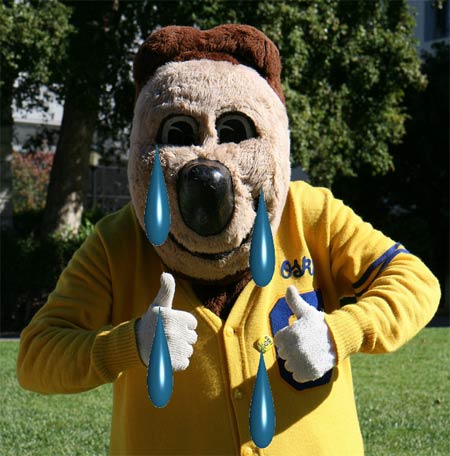
Like me, Oski tries to keep a strong face (and two thumbs up!) but can only keep so much disappointment inside.
more ...Aerial Photo
I've posted some decent photos I took on my return flight this past Thanksgiving weekend. I even managed to get a photo of my apartment in the photo above. If you look closely enough you can also find my previous residence, and the building I work in at school. I tried the 500mm mirror lens my father gave me, but the airplane window was too dirty and nothing came out looking focused.
more ...Identityright
There are two stories that are big in the news right now, the Hollywood writers strike and identity theft. They aren't related, but I see them as almost the same issue.
Hollywood writers are striking to force the producers of scripted shows to share online revenues with them. As long as you agree that the writers are due residuals for their work, it makes sense for them to demand their fair share. The producers say that there isn't any money online and therefore are standing their ground. (Side note: If there isn't any money online, why are the producers not willing to give a percentage of nothing?)
Copyrights are a big deal, that's the base of Hollywood's riches. Hollywood has fought hard to preserve these riches by convincing Congress to pass questionable legislation to protect these rights. Recently a professor at the University of Utah calculated that over a normal day he commits $12.45 million in liability - and he doesn't even use P2P software. The point of the study is that copyright laws are so ridiculous that ordinary, everyday activities that everyone feels are fine are illegal, so the laws should be changed. Simply making a copyrighted work available for infringing is illegal. My point is that congress has agreed with the content owners enough to enact these highly punitive laws that nearly everyone agrees are insane and no one respects.
Over the last few years there have been numerous cases of personal information being lost or stolen from governmental or private sources. Hard drives and laptops are lost and websites cracked. There are also the simple cases of dumpsters with unshredded confidential information. People are having their identities stolen every day which costs them time and money.
The parallel between copyright and what I'm calling identityright is this: we need laws to punish those who lose confidential information to the same extent we punish copyright infractions. Just like a person is criminally liable for simply making works available for theft, companies (and the government) need to be criminally liable for making identity information available, even if no harm has befallen the individual. If the CEO of a company was personally liable for any lost information, you can bet identity theft would decrease almost overnight. Just like the Hollywood writers feel any use of their creative work deserves compensation, I feel that any misuse of my identity gives me cause for redress.
Is this idea any more ridiculous than the current copyright laws?
more ...Miramar One
10:36 playing time, 7629 frames, 41h41m, ~20s between frames, Nov 14-16, 2007
This is the first time lapse that I've time-stamped. I felt it was useful as without the time-stamp, it's hard to tell exactly what time it is, especially at night. It also allows you to see how traffic changes with each rush hour.
I think this time lapse would have worked pretty well with a very short interval, perhaps a second or less. Obviously, I couldn't have run it for nearly two days, but it would have converted the traffic from random noise to the main subject. The most interesting stuff happens in the second evening when various mists and clouds come in, so feel free to fast-forward to that.
The biggest problem with this time lapse is the huge number of frames don't actually contribute to the study. I could shorten the 10 minute running time by increasing the frame rate (or by not including all the frames), but at higher rates the traffic just looks even more random. Things would work better if the view changed much more smoothly.
more ...My Hurricane 550
Above shows me with my new helicopter (the white one) and Tyler Ofstad with his. I finally got it all put together today. Unfortunately, I was unable to get it in the air today as there were some bugs I needed to fix. They were the type I probably would have caught if I was more experienced. But that's to be expected with this new model.
more ...Evacuation
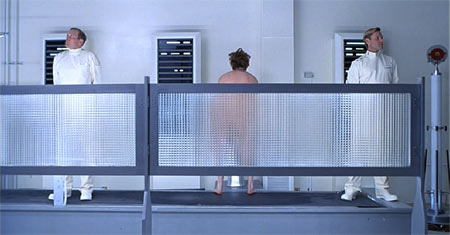
The fires I mentioned in yesterdays post have turned into major fires. The Witch Creek fire is the one of the two that most directly threatens where I live and play. By play I mean probably 75% of my bike ride routes go through already burned areas. That number will probably be higher when this is all over.
There is a non-zero chance that we will have to evacuate from where we live. I'm not too worried right now as there is very little wind in and to our location right now. Without the high winds, the fire will not advance here very fast. We have thought about what we'll take and where we'll go if conditions change. Luckily, we have renters insurance so as long as we remember to take irreplaceable items, we'll be fine financially. We have no idea where we'd live if the apartment burns down.
more ...Birthday Fires
I am a lifetime Californian, and in my nearly 28 years, there have been two major fires that have started during my birthday parties. Having a birthday on October 25th will do that.
On my 12th birthday party, held on the Saturday before my actual birthday, the Oakland Hills Fire started that evening, October 19th, 1991. I had a slumber party and one of my friends was unable to return home in the morning. His parent left home to fetch him and was unable to return; that's how fast that fire moved once the winds increased in the morning. His house didn't burn down, but I had numerous friends who weren't as lucky. There was a very good chance that the fire might have burnt down my family's home. Fortunately for us, the wind shifted and burned other people's homes. Over 3,000 of them.
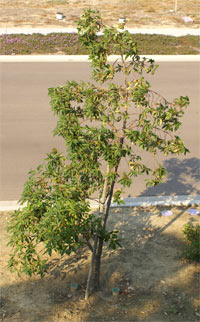
For my first year here in San Diego, I spent my actual birthday evening with a few new friends, and unknown to us the Cedar Fire had already begun. It did not get big until the 26th, and continued to burn for days. School was canceled and the sky turned deep orange with all the soot in the air. The photo above is a true-color image taken on October 28th, 2003.
Well, it's starting to look like a near-repeat. As I sit here, four days from my birthday, there are two major fires burning east of here, and it's getting smoky and orange here already. The culprit is what it always is, Santa Ana Winds. Today has been very gusty and as you can see from the normally straight tree, the wind is strong. It's actually very unpleasant when the air gets this smoky. We've tried closing all the windows but our apartment is very poorly sealed.
The fires already have names, the Potrero Fire and the Highway 78 fire. There's also a major fire burning in Malibu. It's very unlikely that the fires will make their way all the way west to La Jolla, but the Cedar fire made it onto Miramar MCAS, which is only a few miles directly east of here.
The photo below I took an hour or two ago. That's a large cloud of smoke drifting just north of me. I fear that we will have a repeat of four years ago and we'll live in a smoky, orange world for the next few days.
